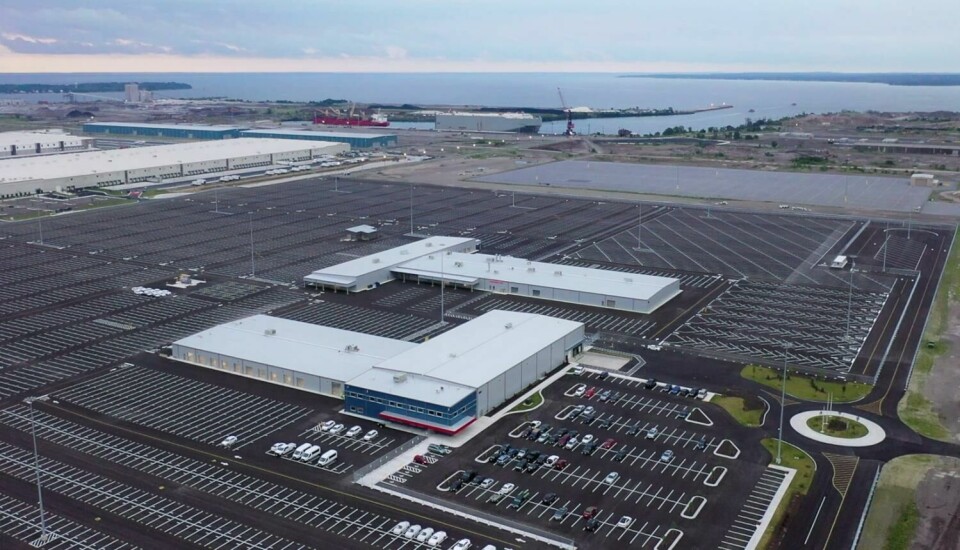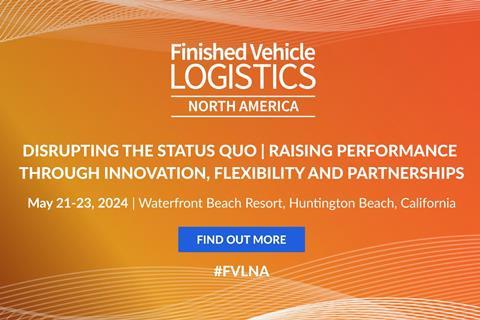Baltimore port on the rebound after bridge collapse
Trade at the US’ busiest vehicle handling port in Baltimore has been overshadowed since March 26 by the destruction of the Francis Scott Key bridge, which has disrupted the flow of vessel traffic in and out of the port.
However, channels of passage have been set up allowing some vessels to transit, depart and arrive at Baltimore’s Dundalk and Fairfield public marine terminals. On April 25, the US Coast Guard opened a 10.6 metre-deep (35 ft) temporary channel and the Army Corps of Engineers will have a permanent, 15.2-metre deep main channel opened by the end of May.

Furthermore, Maryland Port Authority (MPA) has been working with Tradepoint Atlantic, a private terminal operator located at Sparrow’s Point, on the south side of the Key Scott Bridge and therefore with access out of the port through Chesapeake Bay. For the month following the disaster it was the only working terminal at the port of Baltimore. Tradepoint Atlantic has been moving some volumes that were stuck at the Dundalk Marine Terminal.
“Vehicles arriving at Tradepoint Atlantic have been transported to our processing facilities inside the port area blocked by the collapsed Key Bridge,” says Susan Serrano, manager of automotive business development at MPA. “We have been able to employ International Longshoremen’s Association labour during these moves as well.”
Other US east coast vehicle and container-handling ports have been able to manage diverted traffic, including the Brunswick, New York/New Jersey, Norfolk and Philadelphia.
The Port Authority of New York and New Jersey explained that offloaded vehicles were continuing their journey to Baltimore by road.
“With the port of Baltimore being the nation’s busiest for handling vehicles, some cars and trucks that would’ve been destined for Baltimore will instead be offloaded at New York/New Jersey and trucked to Baltimore via car carrier,” said a spokesperson for the port. “There, auto processors will be able to continue their usual work, adding accessories and other customisations to the new vehicles.”
At Brunswick, Bruce Kuzma, senior director of trade development, ocean carrier and non-container sales, said Georgia Ports Authority was working closely with its port partners and customers to ensure that, where it made sense to divert cargo and store it through Brunswick or Savannah, it would be handled in an efficient manner without negatively impacting existing business.
The port of Baltimore is now focused on restoring traffic and continuing with its long-term master plan that will grow business and generate additional jobs.
| Vehicle throughput at Baltimore port | |||||
2023 | 2022 | 2021 | 2020 | 2019 | |
Imports | 676,381 (+17.8%) | 573,831 (+7.6%) | 533,286 (-11%) | 604,617 (-3%) | 629,059 |
Exports | 170,777 (-3%) | 176,332 (-13%) | 204,832 (21.0%) | 169,247 (-26%) | 228,831 |
Total | 847,158 (+12.9) | 750,163 (-1%) | 758,118 (-2.0%) | 773,864 (-9.7%) | 857,890 |
Busiest US vehicle port
Business was booming at the port of Baltimore prior to the collision of the Dali container vessel with the bridge, though there were slightly lower volumes in the first two months of 2024 compared to the same period last year because of cargo that was transferred to the US west coast ports in 2023 in response to tight capacity on vehicle carriers.
In CY2023 the port recorded processing more than 847,000 passenger vehicles and light trucks, with the top five carmakers by volume using the port were Stellantis, Mazda, Volkswagen, Mercedes-Benz and Subaru. It has maintained 13-year run as the US’ busiest vehicle handling port helped by its location as the closest east coast port to the Midwest markets and supported by four on-dock vehicle processors – Wallenius Wilhelmsen Solutions, Amports, Auto Warehousing Co (AWC), Ports America, and SSA (formerly Ceres). Mercedes-Benz has its own processing centre at the port, and Volkswagen and BMW also have their own processing centres located at Tradepoint Atlantic at Sparrows Point. In addition, APS Stevedoring has recently established itself as a terminal operator at Tradepoint Atlantic.
Serrano said the advantages the port offers for vehicle throughput have not gone away and the future is bright for the port.
Infrastructure revitalisation
Baltimore will continue with its berth revitalisation project at the Dundalk Marine Terminal.
“This is strengthening our berths to better handle vehicles as well as high and heavy machinery cargo,” said Serrano. “The Howard Street Tunnel project that will allow for double-stack rail car transit on CSX Railroad is also progressing.”
The charging infrastructure in place at the individual processing facilities is sufficient to handle electric vehicles (EVs) that do require additional charging, though Serrano pointed out that EVs arrive in general with an adequate charge level that allows for speedy processing and drayage out.
“Should the terminal operator feel they need to add charging stations, MPA ensures that the port’s electrical grid supports the addition,” says Serrano.
MPA has another project due to start later this summer at Dundalk Marine Terminal. The project will construct a new box culvert with new lateral drains to handle the more intense rainfalls associated with climate change, says Serrano. In addition, MPA is constructing a Sea Curb around the perimeter of DMT and installing tidal gates/backflow preventers on the stormwater drains to protect against a rise in sea levels and storm surges.
Read more about developments at US and Canadian vehicle-handling ports in the summer edition of Automotive Logistics magazine, which is published in May.






